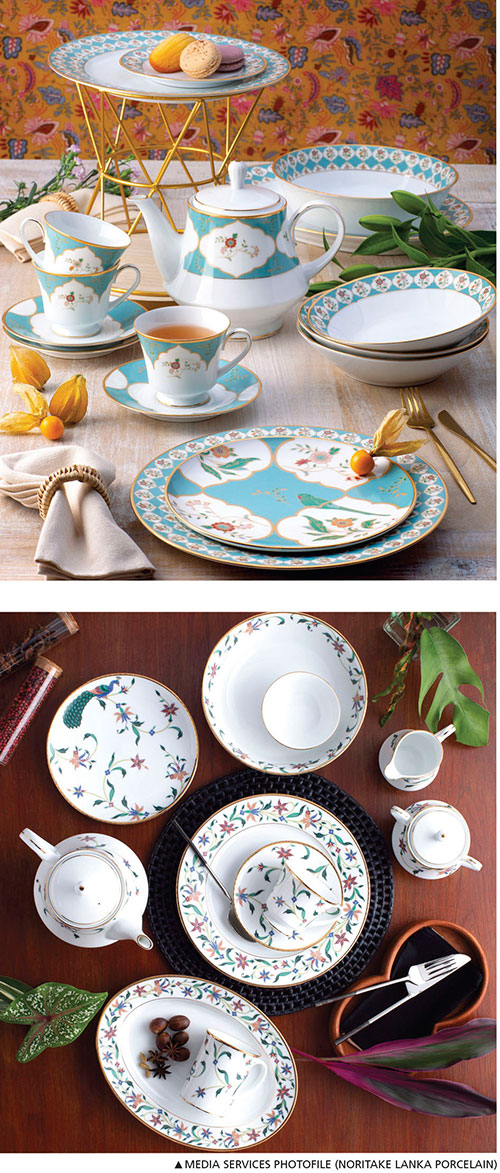CRAFTED EXPORTS
Kenji Obara assesses the future of Sri Lanka’s ceramic and porcelain sector
Sri Lanka’s ceramic and porcelain sector is carving a place for itself, driven by heritage craftsmanship, sustainable practices and a growing alignment with international trends. Despite numerous challenges, the sector holds great potential for expansion into high value markets.
Kenji Obara notes that Japan is at the forefront of demand for Sri Lankan ceramic and porcelain products.
“Japanese consumers have a deep appreciation for ceramic artistry and high quality porcelain. There is strong niche potential for designer ceramics in Japan – particularly in the gift and lifestyle segments, where high end consumers value unique craftsmanship and natural aesthetics,” Obara reveals.
The US – one of the world’s largest importers of ceramic tableware, tiles and decorative items – is another promising international market.
“Demand is especially high for handcrafted, eco-friendly and minimalist designs that align well with Sri Lankan craftsmanship,” Obara explains, adding that there’s also a growing interest in fair trade and ethically sourced products, providing a niche for Sri Lankan SMEs.
According to Obara, the EU – especially Germany, France, Italy and the Netherlands – is showing an appreciation for artisan products. Meanwhile, in the Middle East, “the rapidly growing hospitality and real estate sectors drive demand for quality tableware, alongside luxury and customised ceramic designs for high end interiors,” making it a promising international market.
Obara stresses that consumer trends such as sustainability and eco friendliness are no longer optional: “Consumers want biodegradable, recyclable and low impact products with ethical sourcing.”
“Sri Lanka can meet this demand by emphasising the use of natural raw materials, low emission production processes, eco-friendly packaging, reduced carbon footprints and fair labour practices in accordance with international requirements,” he notes.
And he adds that Sri Lankan businesses can obtain recognised sustainability certifications to serve this purpose.
International customers seek products that have a story, character and individuality. Unique and personalised items designed for gifting or corporate branding enjoy steady demand – especially when paired with easy accessibility, transparent sourcing and convenient online payment facilities.
Obara believes that local craftsmanship has a clear competitive advantage. “Heritage, authenticity and artisanal skill distinguish Sri Lankan ceramics from mass-produced alternatives,” he remarks, adding that the island’s centuries old traditions in pottery and ceramics – influenced by Buddhist art, colonial architecture and South Asian aesthetics – are unmatched by others.
Designs, particularly hand painted ceramics, often draw inspiration from local flora, fauna and religious motifs, creating a unique visual identity.
“Many artisans rely on hand painting techniques passed down through generations, and use locally sourced clay and natural minerals,” Obara explains. This supports sustainability, creates a strong regional identity and an eco conscious appeal, and caters to the growing demand for low impact goods.
In Obara’s opinion, the sector’s focus on small batch, high-quality production rather than mass scale is another competitive strength, as it ensures attention to detail, durability and artistic value that resonate with premium and luxury markets.
“Foreign customers are increasingly seeking products that are ethically sourced and socially responsible, giving Sri Lankan ceramics a strong brand narrative,” he asserts.
Breaking into competitive export markets requires meeting recognised standards. These standards help build trust, satisfy buyer requirements and enhance international visibility.
“The ISO quality management certification ensures consistent product quality and operational efficiency. And environmental management systems are critical for eco sensitive markets – such as the EU and Australia – while occupational health and safety standards are important for large buyers who are concerned about ethical sourcing,” Obara notes.
He points out that food safety and lead free certifications are vital for tableware exports, while standards connected with sustainable materials and eco designs will enhance competitiveness.
Obara suggests that Sri Lankan SMEs should strike a careful balance between maintaining handcrafted authenticity and meeting large-scale production demands abroad. He emphasises that “automation should be used wisely but hand finishes must be preserved.”
Meanwhile, companies should train more artisans, maintain high standards, and manage demand through transparent timelines and strategic partnerships, he adds.
“Telling the authentic artisan story not only justifies price and production time but also strengthens the brand,” he explains.
By balancing handwork with selective mechanisation – automating non-artisanal processes while retain hand painting, glazing and finishing – producers can ensure consistency, reduce labour strains and scale up capacity while retaining the artisanal identity.
Obara stresses: “Building a strong ‘Made in Sri Lanka’ ceramic brand needs a clearly defined narrative, standardised quality and ethical production.” He emphasises that innovation rooted in culture, investment in artisan skills and capacity building is essential.
“Unified international visibility coupled with eco conscious consumerism will help Sri Lankan ceramics capture a greater market share,” he concludes, adding that social media can be used to tell authentic artisan stories through short videos, process reels and behind-the-scenes content.



